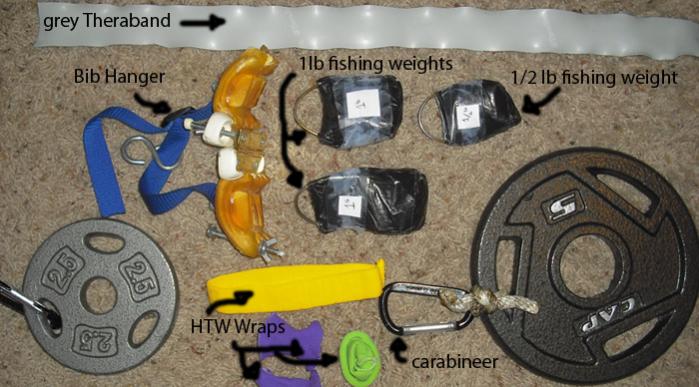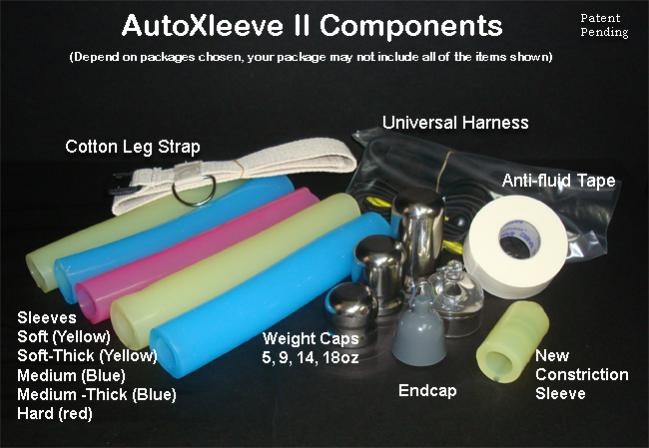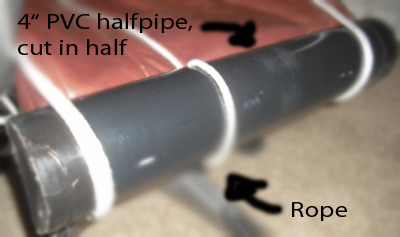Blink's Hanging 101
Warning: Hanging is an advanced PE exercise. Don’t attempt it unless you have at least completed the Newbie Routine.
HANGING 101
Contents:
Part 1: What is Hanging & Which Type of Hanging Device To Choose
Part 2: Your First Hanging Routine, Rest Days & Equipment
Part 3: Hanging Fatigue, Angles of Attack, Ligaments First
Part 4: Skin Stretching, The Wrap, Hanger Attachment, Hanging Technique
Part 5: Mini-Glossary: Hanging Related Terms & Angles
Part 6: LOT Theory: Why Use a “Debunked” Theory?
Part 1: What is Hanging & Which Type of Hanging Device To Choose
What is Hanging?
Hanging is possibly the most ancient PE technique in existence. Followers of the Indian Shaiva Naga Sadhu sect, Peruvian Cholomecs, and Karamojong African tribesmen have all used ‘hanging’ to increase penis size (or in the case of the Sadhu, to destroy all feeling in their penis). Effectively, traction is used over long periods of time to increase penis size through micro-tearing and deformation. Eventually, the penis heals in a permanent, elongated state.
Why Hang?
First and foremost, hanging has demonstrated the capacity to permanently add penis length (both erect and flaccid). Hanging is one of the oldest forms of PE and is a very well proven technique. In fact, many PE veterans believe hanging is the single best way to increase penis length. There are many stories of hangers permanently adding 2” to 3” of erect penis length. In the most spectacular story, “Bib” aka “Bigger” gained an amazing 4.5” of erect length through hanging. Many hangers (about 2/3) also gain .5” to 1.5” of erect girth (EG) at the very base of the shaft. Hanging will not add girth to the rest of your shaft, and some hangers gain no girth at all.

Above: The Bib Starter. Probably the most popular of all hanging devices, even among Bib’s various designs. Image courtesy of bibhanger.com
With manual PE exercises, it’s sometimes hard to tell how much force you are applying to your penis. In contrast, with hanging you always know exactly how much weight you are hanging from your penis. With hanging, you can also increase the weight very slowly, in small increments (vs. other PE methods where can’t tell exactly much additional force you are using). Due to these factors, fatigue is somewhat easier to manage with hanging.
However, even with hanging, the amount of weight you need in order to reach fatigue can change daily and weekly, and even hourly. If you push yourself during one set, you may find you must greatly reduce the amount of weight you are using during your next subsequent set. You must carefully monitor yourself, and listen to your penis. A sharp pain is always bad. Other feelings can be harder to identify; this is why keeping a journal is critical. Referring back to old feelings later may help you determine what is, and what is not working with your routine. Reaching high enough levels of fatigue (without injury) to cause permanent deformation is almost more art than science.
Length First, Girth Second
If you are debating whether to hang, you should consider whether you want to gain any more length. If you gain too much girth, you may find that it’s too difficult or even impossible to make good length gains. An analogy often used is that it’s easier to stretch a thinner rubber-band. If you are incredibly thick, you’ll need more weight, or more force to stretch your tunica. Another issue is that the scarring or toughening that occurs with big girth gains, can actually prevent hanging gains, while the opposite doesn’t seem true. Hangers seem to have no problem gaining girth once they stop hanging.
Choosing a Hanging Device
So you’re an experienced PEer, and you’re ready to hang. You now need to choose a hanging device. There are two primary types of hanging devices:
Traditional Hangers: (Bib Hanger, Muzzle Hanger, Sock Hanger, Captn's Wench, etc)
There’s a long learning curve on getting the wrap and hanger attachment settings perfected. Once you optimize your settings over many months, there’s a relative level of comfort. However, this type of hanger will never be as comfortable as a Vacuum hanger. With Vacuum hangers, you’re limited to maybe somewhere around 15-20lbs of weight on the high end. In contrast, with a traditional hanger, there’s no real effective weight limit. Experienced hangers like “Dustpan” have used as much as 75lbs for short periods of time while hanging.
With traditional hanging devices you’re limited to sets of 20 minutes in length, and after each set you must take a break of 10 minutes to restore circulation (Beyond 20 minutes, there’s tissue death, and some very experienced hangers use breaks less than 10 minutes, but this is not recommended).
MY PE EQUIPMENT IMAGE

Bib Hanger With Weights
Vacuum Hangers: (e.g. AutoXleeve, VacExtender)
There’s a fairly short learning curve on attaching these devices, since a wrap is not an absolute requirement. However, most VAC hangers, especially those using higher weights find that they absolutely must use tape to protect their glans. 3M makes a special Micropore tape that leaves no residual; most VAC hangers use this.
You also don’t need to worry about taking breaks every 20 minutes. Many Vacuum hanging PEers find that they can maintain blood flow while hanging. This means, substantially less work is required vs. a traditional hanger. Remember, every time you attach a traditional hanger, you’ve got to get the settings right, which can be difficult at first, and still tedious even if you’re an advanced hanger. If your wrap gets loose, or is falling off, you may also be forced to re-wrap (more of an issue with traditional hangers).
Despite the great advantages of Vacuum hanging, there are still some downsides. You can’t go beyond 15lbs to 20lbs (compare that to a traditional hanger where there’s virtually no weight limit). At higher weights, the VAC hanger either causes too much pain or or the silicone sleeve tears (expensive). There are also reports that using a vacuum hanger for many years can cause a raised whitish circle on the glans. In fact, the same effect has been reported with extreme usage of VAC ADS Extenders as well. Overall, there have been numerous reports that VAC hangers can make your penis ugly. Based on anecdotal evidence, it appears this is more of a concern with heavy VAC hanger usage.
Most manufacturers give you a few disposable silicon sleeves when you first purchase a VAC hanger, but eventually they will all tear with prolonged use (or increased weight). Then, when you attempt to buy more silicon sleeves they are usually overpriced. Lots of VAC hangers have tried to make their own silicon sleeves, but often this ends up being just as expensive if not worse. Over months and years VAC hanging eventually becomes several times more expensive than traditional hanging due to the inevitable need to continue replacing the silicone sleeves.
AUTOXLEEVE COMPONENTS

An example VAC hanger with sleeves, anti-fluid tape, weight caps, etc.
Hanger Should Match Goals, Budget, & Preferences
When choosing a Traditional vs. Vacuum hanger, consider all the pros and cons of each device. Great gains can be obtained with either type of hanger, so that’s a moot point. In the end it’s a matter of personal preference and goals. Some hangers buy multiple devices and try them all, while others (on tight budgets) only use home-made hanging devices. In my case, I decided a Bib Starter (traditional hanger) was the best match based on my requirements, budget, and goals. I purchased my Bib Starter in 2008, and it’s still in excellent shape to this day.
Last edited by blink2000 : 09-20-2010 at .

